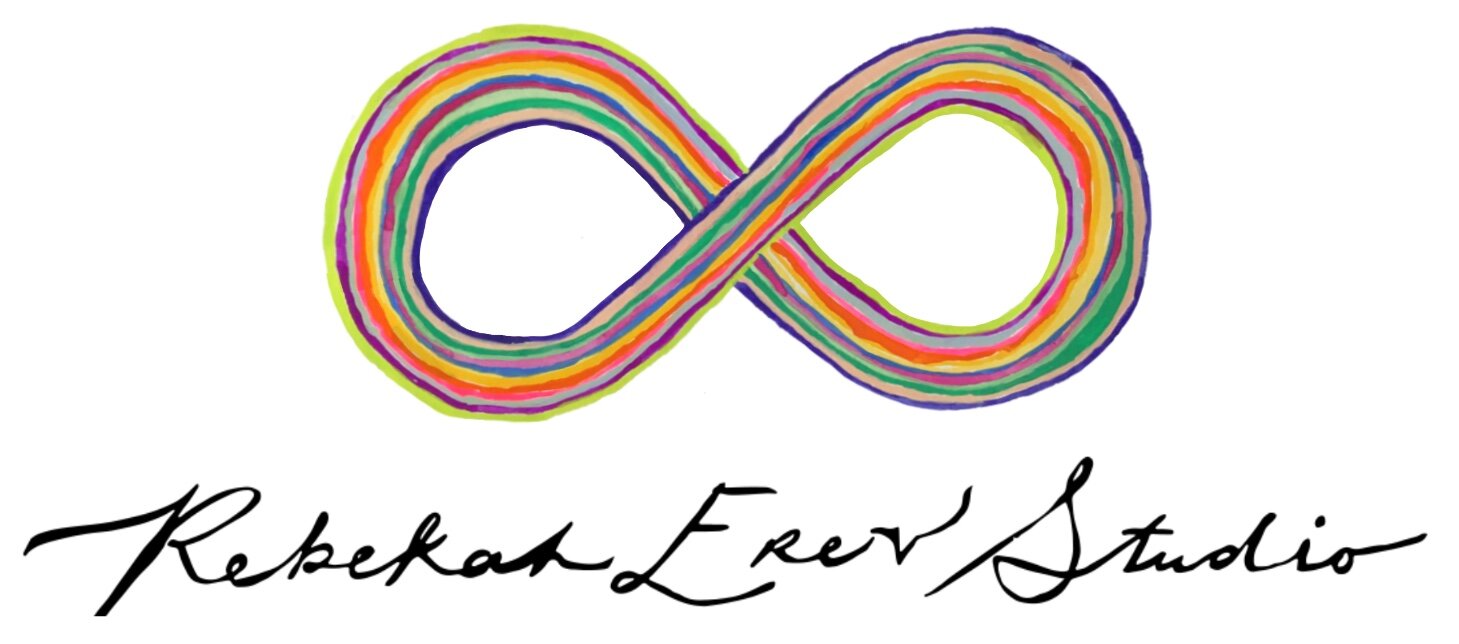BATS! CHESHVAN! THE LETTER NUN (נ) - AKA: All that's spooky doesn't spook
/If you have the Golden Dreams of Olam HaBa Magical Planner, you’ve read Shoshana Brown’s mystical take on this month. I offer here some additional insights to her brilliant wisdom.
This month for the Cheshvan class of Embodying the Hebrew Letters we studied the themes of Cheshvan and how they relate with the letter Nun, bats and cedar.
The month of Cheshvan, is a month with no Jewish holidays but following the month of Tishrei, a treasure box of holidays. We soak in all the goodness and then we rest. We rest in the darkening days. In our evenings we say prayers, we bless our evening meal, we give thanks for the harvest of our food, we light candles-alighting the souls of our ancestors and inviting them into our space and we reflect and do teshuva for our day. Then we rest, we sleep, we process, we dream. This is how we begin each Jewish day, with rest. The day is echoed in the year in this way.
Nun is the letter associated with Cheshvan. Although people often talk about Cheshvan being the month of bitterness because of the lack of holidays, I am instead connecting it to a time of miracles. Nes in Hebrew means miracle and the letter nun is associated with them. According to the Sefer Yetzirah, the book of creation, the letter nun is also associated with locomotion, the way we move in the world. Not just our physical movements but our way. In this time of quiet, of darkening days, of outer uncertainty, we can come back to the miracle of our lives and contemplate who we have come from and who we are becoming. This is the miracle of human experience, the lesson of Nun, Cedar, Bats and Cheshvan.
Cedar (Erez is the male and Azra is the female names of the plant in Hebrew) is a tree that runs deep in the life of Jews. Cedars of Lebanon may come to mind. This tree is mentioned many times in the torah. Cedar is an ancestral tree, a tree of protection. It’s a tree good for the lungs and an antimicrobial. It encourages white blood cells to work better and therefore is great for immune function (even denaturing cancer. I learned this from Rhonda Grantham of Canoe Journey Herbalists. You can learn more and support their fundraiser here.) This time of year (the autumn), the female cones are producing seeds. Unlike flower producing trees who depend on hummingbirds, bees, bats, butterflies to pollinate them, this tree is pollinated by the wind.
As a month with no holidays, there is a certain sadness to the month of Cheshvan. The achetype for the month is the mekonenet, the mourning woman. Mekonenet means: one who laments or one who makes a nest. When we allow time to grieve, we give our lungs more space, therefore promoting our immune function. Our breath is what gives us life, the wind is an elemental force reminding us the breath of the earth lives in us. The wind pollinates cedar therefore spreading her life. Burning, breathing in, smelling, touching cedar gives us protection and comfort, a nest to grieve. Cedar reminds us of our ancestors and their living breath within us.
Bats fly on the wind when the light dims, falling behind the trees. Bats are the only mammal that flies. Because many bats are insectivores and control insect populations they are therefore important for preventing the spread of diseases. So in this way we can see bats as a protective animal from death. Bats also spread seeds through their poop like birds and pollinate many flowers, so in this way we can see them as helping to continue life. Because they feed and fly at night, or early evening, we see they are the animal that starts our Jewish day, and we might even think of them as angels of protection.
Simple ritual practice: At night time, when you are cozying into bed, prop your blankets and pillows around you snug, like you are making a nest for yourself. Sit or lie quietly. Either burn or imagine burning cedar. Bring her protective smoke, the winds of your loving ancestors around you. Call in the energy of bat, who brings new life in the night. Ask her to protect you. Ask her to bring you a dream, while you are in your nest. When you wake up, lie quietly. If you remember your dreams, write them down or record them. If you don’t, listen to any sounds, words or phrases that come to you. Notice what your thoughts first go to upon waking. Notice where your eyes are drawn to in the room or what sounds you notice. Journal about death and rebirth. What do you wish to die? What do you wish to be reborn? What do you wish to give life to?
If this insight into Nun and Cheshvan captures your imagination, please sign up for my Patreon where I will be giving monthly updates and insights into the Hebrew letters.





